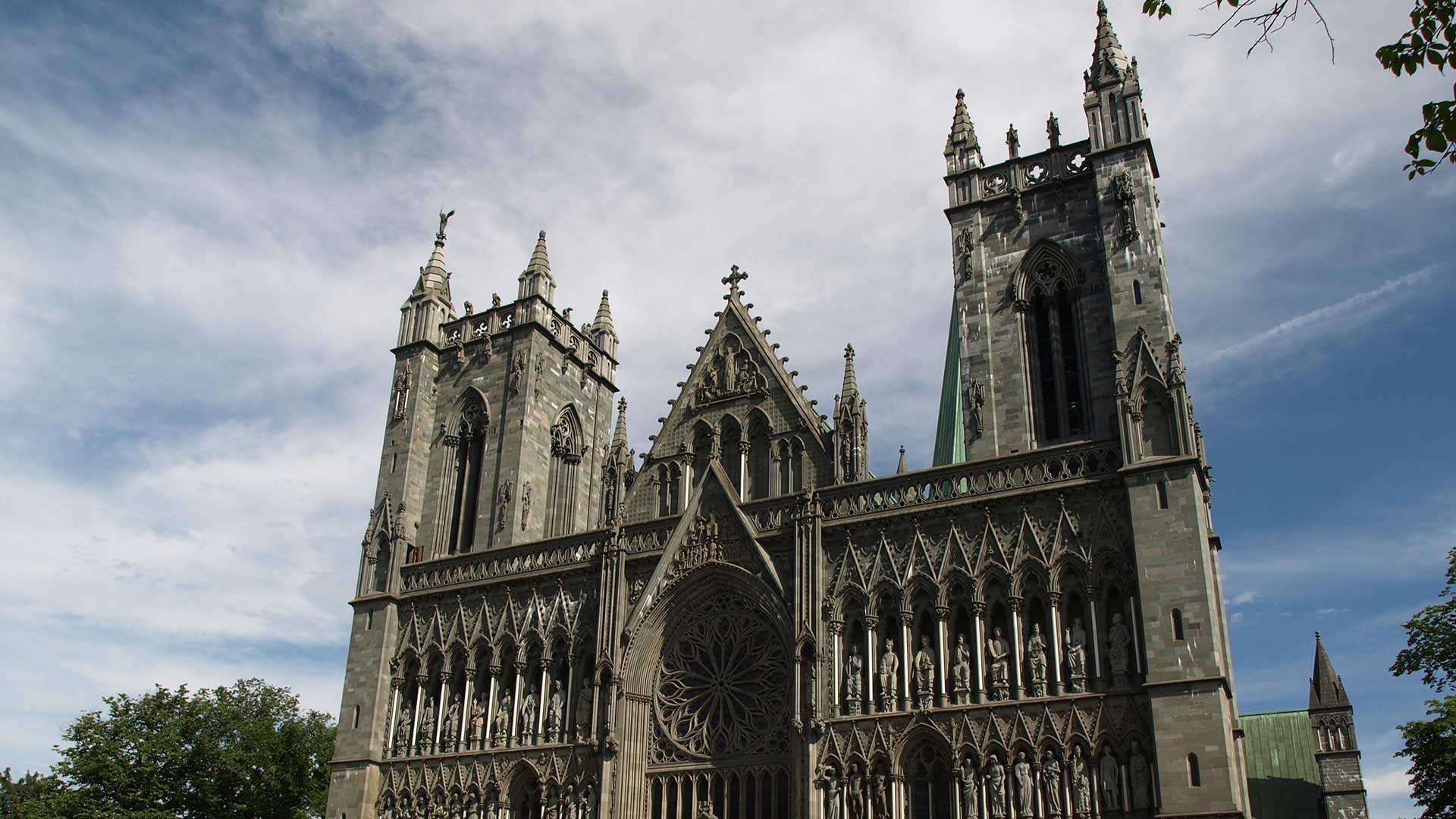Visit the resting place of Norway’s patron saint and uncover secrets of the country’s religious history
Formally known as Nidaros, Trondheim was historically the religious centre of Norway. It’s in this city that Norway's national sanctuary, the Nidaros Cathedral (“Nidarosdomen”), stands over the gravesite of St. Olav, Norway's patron saint, whose reputation shone far beyond the borders of his home country.
According to folklore, King Olav Haraldsson was buried at the Battle of Stiklestad in sandy ground near the river. After his body was moved to the town church, a spring appeared near his original gravesite that was alleged to hold miraculous healing powers. The grand cathedral you see today was built around 1070 on the site where the King’s body had lain.
Ravaged by fire on several occasions, the church was rebuilt each time, with the oldest remaining parts dating back to the 12th century. It has hosted the coronation of several kings and queens, and you can even view the crown jewels on display in a side chapel.
Next to the cathedral stands the Archbishop’s Palace (“Erkebispegården”), the oldest surviving archbishop’s residence in Scandinavia. Built in the 12th century, it served as both the archbishop’s home and the Catholic Church’s seat of power. Inside, you can see palace artefacts, statues and firearms from when the building also functioned as an armoury.
View The Fjords
